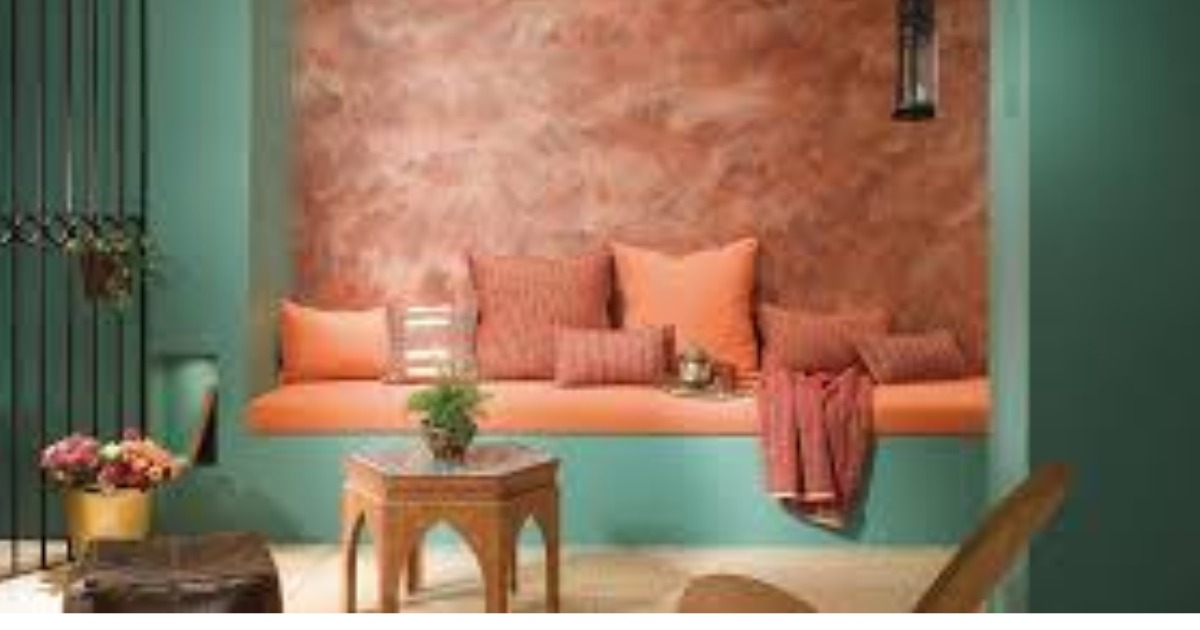Imagine walking into a room where the walls seem to tell a story. They’re not just painted—they’re alive with patterns, depth, and character. That’s the power of wall texture paint. This isn’t your average coat of colour; it’s a design tool that transforms flat surfaces into captivating focal points. Whether you’re dreaming of a cozy rustic retreat or a sleek modern masterpiece, wall texture paint can make it happen. In this article, we’ll dive into what makes texture paint special, its benefits, creative application ideas, and how to choose the perfect style for your home.
Understanding Wall Texture Paint
At its core, wall texture paint is a thick, versatile coating that adds a three-dimensional effect to walls. Unlike standard paint, it’s blended with materials like sand, plaster, or acrylic to create tactile patterns. The result? Surfaces that mimic everything from weathered stone to smooth suede. Available in water-based or oil-based formulas, texture paint is durable, easy to apply, and perfect for both indoor and outdoor projects. Whether you wield a roller, trowel, or sprayer, this paint lets you sculpt your walls into something extraordinary.
The Benefits of Choosing Texture Paint
Why go textured? Here’s why this paint is a favorite among homeowners and decorators:
- Camouflages Flaws: Uneven walls or minor cracks? Texture paint hides imperfections, making it ideal for older homes or well-loved spaces.
- Boosts Aesthetic Appeal: A textured wall adds drama and sophistication, turning a plain room into a conversation starter.
- Built to Last: Thicker than regular paint, texture paint resists wear, scuffs, and fading, especially in high-traffic areas like hallways or kitchens.
- Endless Customization: From bold, chunky textures to soft, subtle ones, you can tailor the finish to suit any vibe—bohemian, industrial, or classic.
- Adds Value: Unique wall treatments can elevate your home’s appeal, impressing potential buyers with a touch of craftsmanship.
Creative Techniques to Try with Wall Texture Paint
Texture paint is like a playground for creativity. Here are some inspiring techniques to spark your imagination:
- Orange Peel Texture: This sprayed-on finish creates a gentle, dimpled look, like the skin of an orange. It’s subtle yet stylish, perfect for living rooms or offices.
- Slap Brush Texture: Using a stiff brush to slap wet paint creates a bold, starburst-like pattern. It’s great for adding energy to a kid’s room or creative studio.
- Stucco Finish: Mimicking traditional stucco, this trowel-applied texture brings a warm, Mediterranean charm to dining areas or patios.
- Rag Rolling: By rolling a crumpled rag over wet paint, you can create a soft, cloud-like effect, ideal for serene bedrooms or bathrooms.
- Brick Effect: With careful trowel work, texture paint can imitate exposed brick, adding urban flair to lofts or accent walls.
- Smooth Texture: For a polished, understated look, smooth texture paint adds just a hint of depth, perfect for minimalist or modern spaces.
Each technique offers a distinct personality, so pick one that resonates with your home’s style.
Step-by-Step Guide to Applying Wall Texture Paint
Ready to get hands-on? Here’s how to achieve a professional-grade textured finish:
- Prepare the Wall:
Start with a clean, smooth surface. Wash away dirt, patch holes, and apply a primer to help the paint stick.
- Select Your Tools:
Rollers are great for light textures, while trowels or sponges create bolder effects. Have a variety of tools ready for experimentation.
- Mix the Paint:
If you’re adding texture compounds, blend them into the paint carefully. Test the mixture on a piece of cardboard to check consistency.
- Apply the First Layer
Spread a base coat of texture paint evenly. Let it set slightly before adding patterns.
- Create Your Texture: Use your chosen tool—brush, rag, or trowel—to shape the texture. Work in small patches to keep the design uniform.
- Finish with a Topcoat: Once dry, seal the texture with a clear coat or add a colored glaze for extra depth. Choose a sheen (matte or gloss) to match your vision.
How to Pick the Perfect Texture Paint for Your Space
With so many options, choosing the right texture paint requires a bit of planning. Here’s how to make the decision:
- Think About the Room: Bold textures shine in spacious areas like living rooms, while subtle ones work better in smaller spaces like powder rooms.
- Align with Your Decor: Pair rustic textures with farmhouse or vintage styles, and sleek finishes with contemporary or Scandinavian aesthetics.
- Test in Different Lights: Textures look different under daylight versus lamps, so paint a sample and observe it throughout the day.
- Set a Budget: Premium textures like faux stone are pricier, but DIY options using basic paint and additives can save money.
- Sample First: Always test a small area or a board to ensure the color and texture feel right in your space.
Caring for Your Textured Walls
Textured walls are tough but need gentle care. Dust them weekly with a soft cloth or vacuum brush to keep them pristine. For spills or stains, dab with a mild soap solution, avoiding heavy scrubbing that could flatten the texture. Store extra paint for touch-ups, and reapply using the same technique to blend seamlessly.
Eco-Conscious and Affordable Choices
Want to keep it green? Opt for low-VOC texture paints from brands like Behr or Dunn-Edwards, which are kinder to the environment and your health. On a budget? Mix your own texture paint by stirring sand or drywall compound into latex paint. It’s an affordable way to experiment with custom looks without splurging.
Conclusion
Wall texture paint is your ticket to a home that feels uniquely yours. It’s more than a finish—it’s a chance to play with patterns, hide flaws, and create spaces that inspire. Whether you’re brushing on a soft swirl or troweling a rugged stucco effect, texture paint brings walls to life. So roll up your sleeves, grab your tools, and let your walls become the canvas for your next big idea. Your home deserves to shine!


